In pictures: How Rio has made the world’s biggest iron ore business into a machine
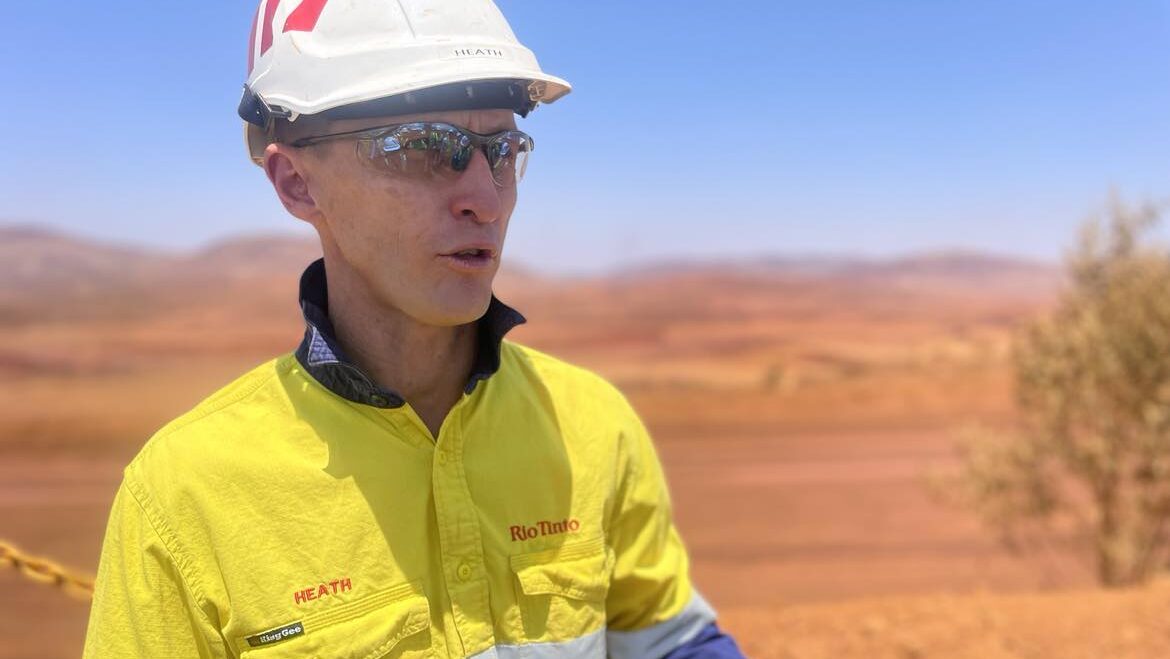
Heath Harnden, GM of Rio's Gudai-Darri operation. Pic: Stockhead
Powered by the Japanese Economic Miracle, the Pilbara was opened to iron ore mining in the 1960s.
In 1964 Rio Tinto’s (ASX:RIO) Hamersley Iron signed its first deal to supply £270 million worth of iron ore to Japanese steel mills — 65.5Mt over 16 years.
By 1966 that ore was on the water after 18 months building the Tom Price mine and the towns of Dampier and Tom Price, along with hundreds of kilometres of rail and a new port.
Today, almost 60 years later, Rio now runs the largest iron ore export operation in the world, on track to hit above the mid-point of its guidance of 320-335Mt in 2023.
Last week Stockhead, along with a host of national and international media, went under the hood at the business, which a rush of automation in the past decade has turned into a virtual machine.
Today iron ore, which has been sold under an open spot market assessed by pricing agencies since 2010, pays around US$113/t.
Rio shipped 161.7Mt in the first half of 2023, well over double the quantity committed to in that initial contract. It did so at US$21.20/t – though it hopes to get that back to US$20/t in the coming years as it attempts to ramp up output to around 360Mtpa.
That has risen US$6/t in recent years and places Rio higher on the cost curve than its immediate competitors BHP (ASX:BHP) and Fortescue (ASX:FMG).
All it cracks up to be
There are concerns across that network. The destruction of PKKP cultural site Juukan Gorge in a rock blast in 2020 raised scrutiny over its mine plans and relationship with traditional owners.
It has cut off higher grade mining areas where heritage has had to be reviewed. The latest incident, resulting in a pause of the Nammuldi mine, came after Rio revealed it had disturbed a rock shelter just 150m from the site significant to the Muntulmura Guruma people.
Rio said last week it had improved mine health, asset health and the sustainability of its mining operations after a great reset following Juukan, finally returning to growth this year after falling to 320Mt over three years from hitting its record of 338Mt in 2018.
The mines are the bottleneck, with port capacity at Dampier and Cape Lambert already around the 360Mt mark and its solely owned and heavily automated rail network now able to run at 350-360Mt in full flight.
A number of brownfields expansions, including a 7Mtpa increase to take the new Gudai-Darri mine to 50Mtpa (well below a 70Mtpa expansion recently studied), will help boost output by 2028.
But until the long-delayed Rhodes Ridge development comes to fruition at the end of the decade, containing a monstrous 6.8Bt of iron ore at 61.6% Fe, the company will increase sales of its low grade SP10 product to a less than ideal 13-15% share of production.
Once Rhodes Ridge is in operation, half-owned by family of Lang Hancock’s business partner Peter Wright including WA billionaire Angela Bennett, Rio’s flagship Pilbara Blend will return to over 85% of sales it claims.
Even with those challenges, the margins are extraordinary and it would remain cashflow positive even if prices returned to the decade lows of US$38/t seen in 2015.
How it, and other iron ore majors, have done that is to turn mining operations into a virtual machine.
Gudai-Darri
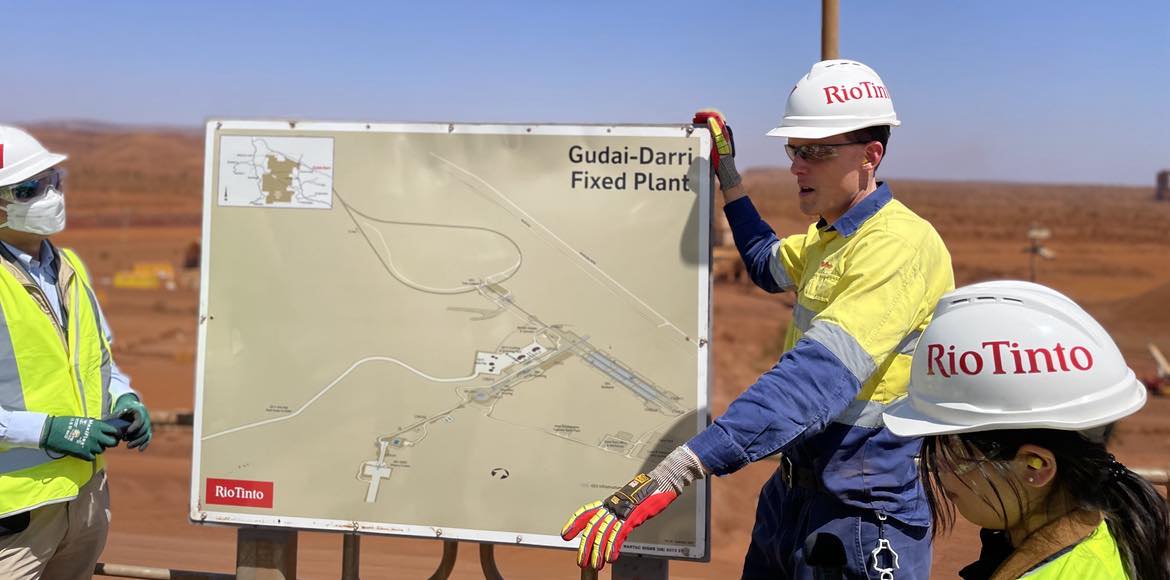
Rio Tinto’s Gudai-Darri mine is one of three new wave DSO mines in operation across WA’s Pilbara alongside BHP’s South Flank and Fortescue’s Eliwana, while FMG also recently opened its Iron Bridge magnetite mine.
At 43Mtpa, Gudai-Darri is among the most advanced in the world.
Opened in mid-2022, it took less than a year to hit its nameplate capacity. While its massive plant infrastructure won’t be duplicated as previously conceived, a US$70 million expansion to add 7Mtpa of incremental capacity is anticipated to take place from 2025.
Its diggers and loaders are manned, but its Caterpillar trucks are fully automated, run out of an operations centre in Perth with code to direct their passage across the 5km by 3km Kara pit. Of its 430 haul trucks across 17 mines, 361 are automated.
For the first time, Caterpillar has also delivered autonomous water carts. The company says the unmanned vehicles deliver productivity and safety benefits.
It is looking to enhance automation and bring a tech focus into other areas of the site.
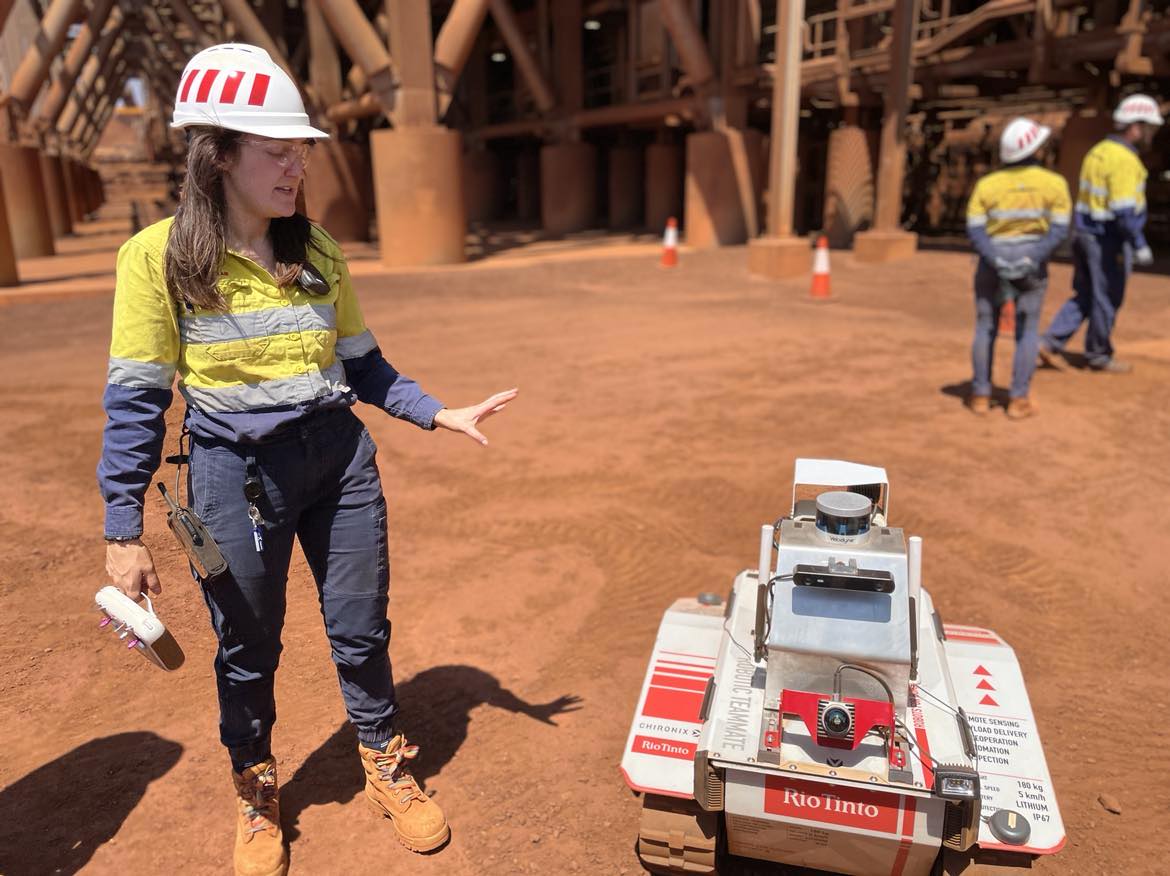
This robot (or row-bit if you’re Futurama’s Dr Zoidberg) is being trained to use a thermal sensor to test idlers along the 5-7km of conveyor belt taking iron ore from Gudai-Darri’s crusher to its stockpiles. There are around 3000 idlers (spinning bits of metal that propel the conveyor along) for every km of belt.
From early next year Rio’s engineers hope to have the robot automated, perpetually running a process manual assessors only complete in full every 12 weeks. By catching symptoms of failing idlers early, the company hopes to reduce the 60 hours of downtime each eight months from unplanned maintenance shutdowns at the fixed plant attributed to idler failure.
That’s millions in cash money. It also does burnouts.
Gudai-Darri is partly powered by a 34MW solar farm, consisting of 81,000 panels over a space the size of around eight Optus Stadiums.
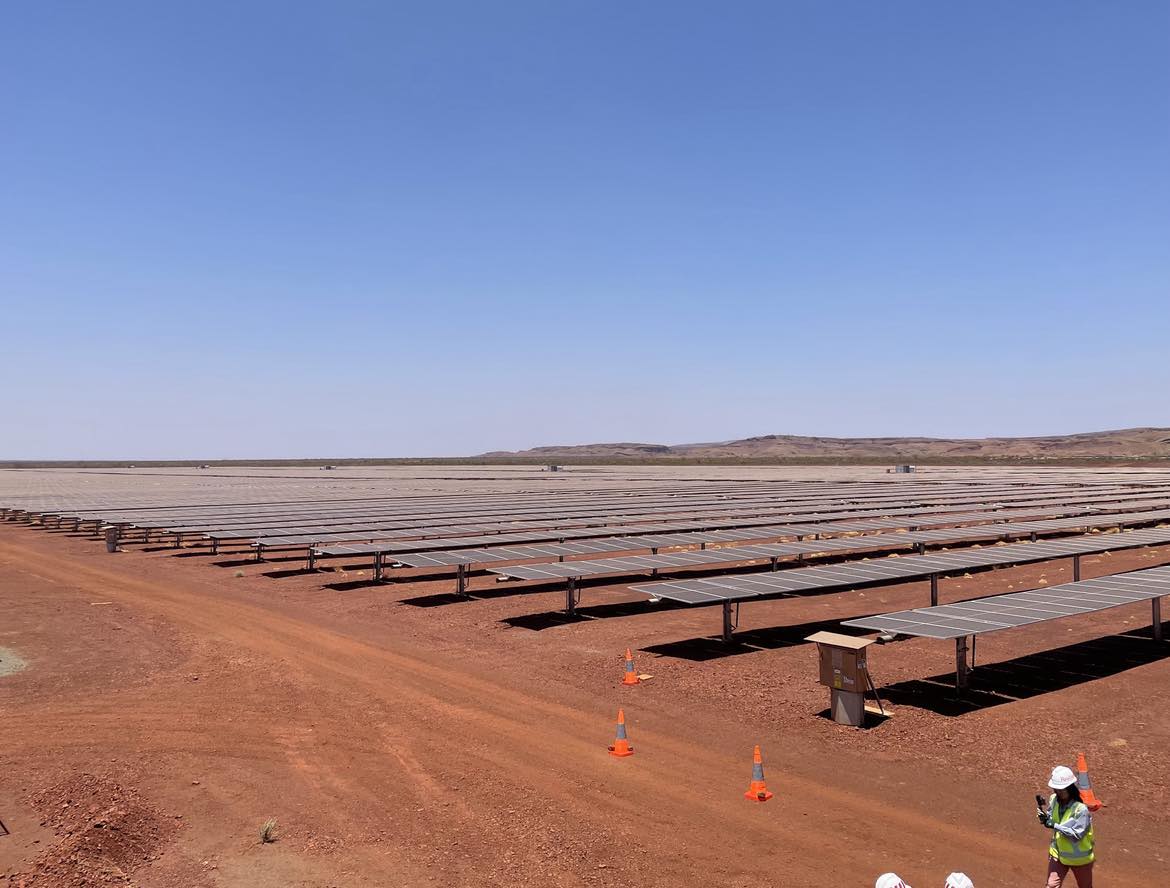
It is the start of what is expected to be 600-700MW of renewables required to largely displace Rio’s gas power requirements across the Pilbara. The company is spending US$7.5b on decarbonisation by 2030, something expected to reduce scope 1 & 2 emissions by a targeted 50% on baseline levels.
In iron ore alone that spend will be US$3b, with Rio’s iron ore division responsible for around 3.3Mt of CO2 emissions in Australia a year.
It is looking into wind generation at Gudai-Darri and is studying around 300MW of solar installations, along with a 75-150MW solar farm being studied by a company part-owned by the Yindjibarndi People to expand its renewable power network in the coming years.
Rail
Rio’s mines send their ore along a 1900km rail network to the ports of Dampier and Cape Lambert, largely via trains operated remotely from Perth.
Drivers still enter train cabs on the final journey into port and on the line from its Robe River operations where Rio produces its low phos Robe Valley lump and fines product prized, like the ore from its Yandicoogina mines, for use in steel purchased by automakers in Japan.
But the bulk of the 40-hour cycle is undertaken now by unmanned locos. The benefit is a roughly two-hour saving and hundreds of kilometres of light vehicle movements from not having to switch drivers after each 12-hour shift.
Each train carries 28,000t of ore in a 2.5km long trail of ore cars.
Those trains are serviced at a maintenance yard in Karratha, where previously manual tasks have largely been handed over to machines, with staff more focused on process and data collection. Rio hopes the semi-automated nature of much of the maintenance shed’s work will help improve the gender balance of its workforce.
Since 2015 the process of re-profiling its 1.6t train wheels has been automated, something that allows it to reshape the wheels roughly every 16-month cycle.
A few of those the wheels are spent and sold as scrap, though axles have a longer life. A recent returnee to the workshop was a 1973 vintage.
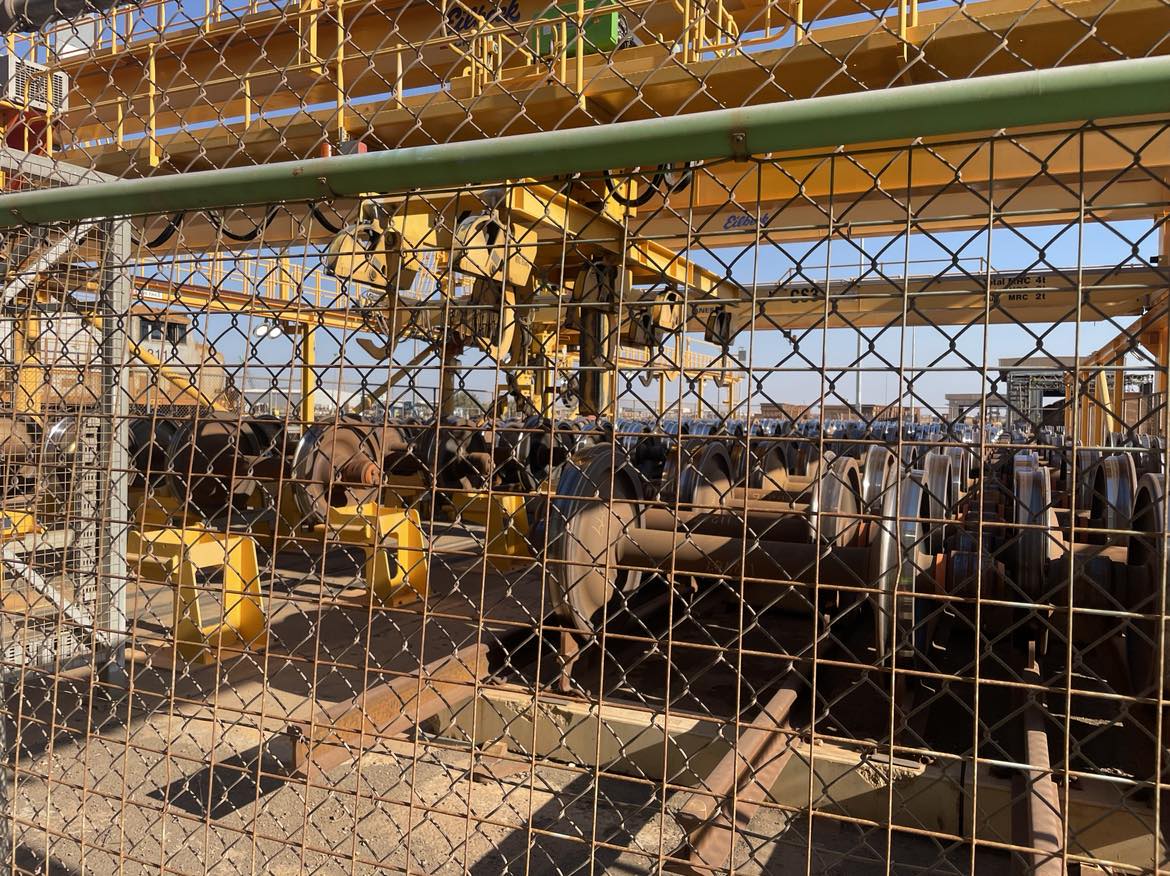
Port
Major iron ore miners keep their costs as low as they can by owning their rail (or trucking in the instance of Mineral Resources (ASX:MIN) at its new Onslow iron ore hub) controlling infrastructure at port.
While most export out of Port Hedland, Rio has virtually unfettered use of Dampier and Cape Lambert.
Dampier, which sends off around 140Mt of Rio’s output annually, can host 5Mt of ore on stockpiles at any point in time.
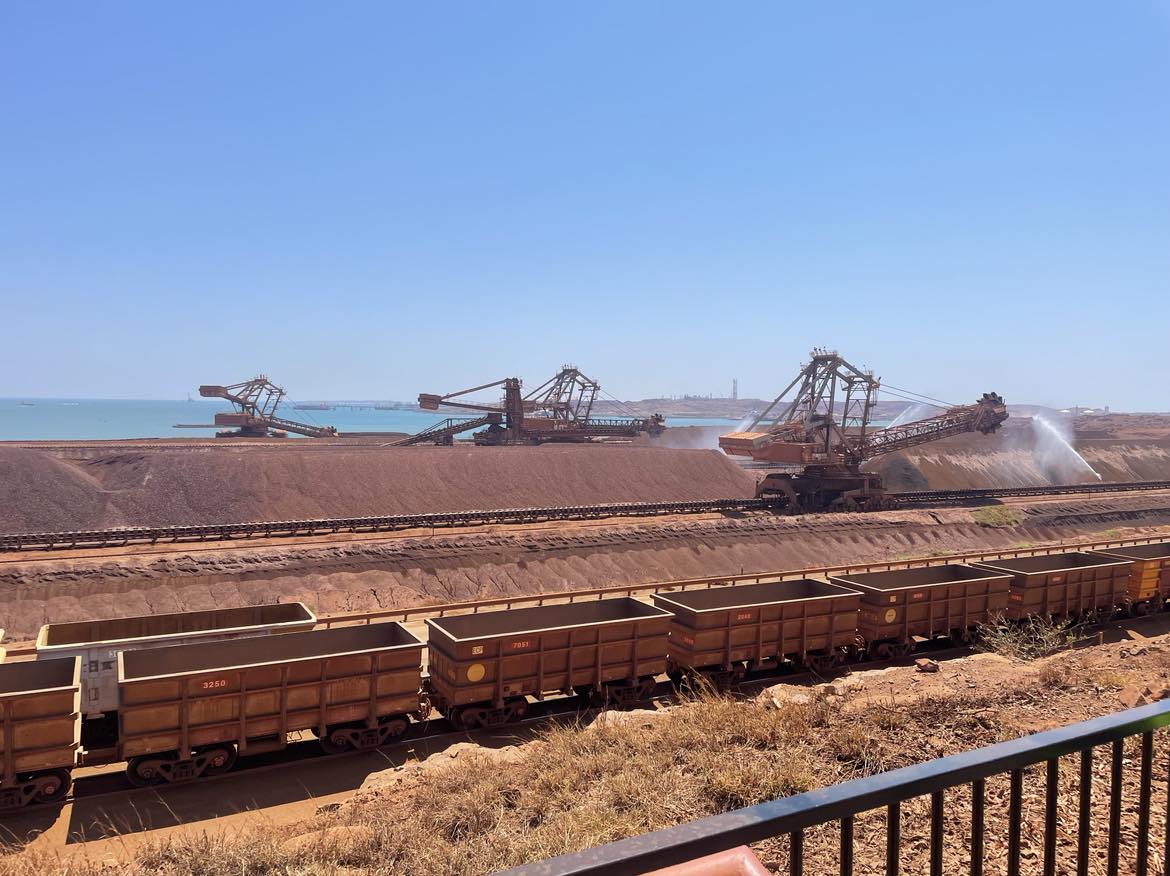
Trains are driven into port where they are bumped along two cars at a time by a mechanical hand into a car dumper, which spins the ore out of the car, before the ore is moved onto stockpiles, which are layered like a cake.
Reclaimers bite down through the stockpiles like a slice, taking a chunk of ore that is blended by virtue of this layering process and putting it onto conveyors that take it for sampling.
The ore then runs through a 60km network of conveyors reminiscent of a Sonic the Hedgehog level known colloquially as Spaghetti Junction.
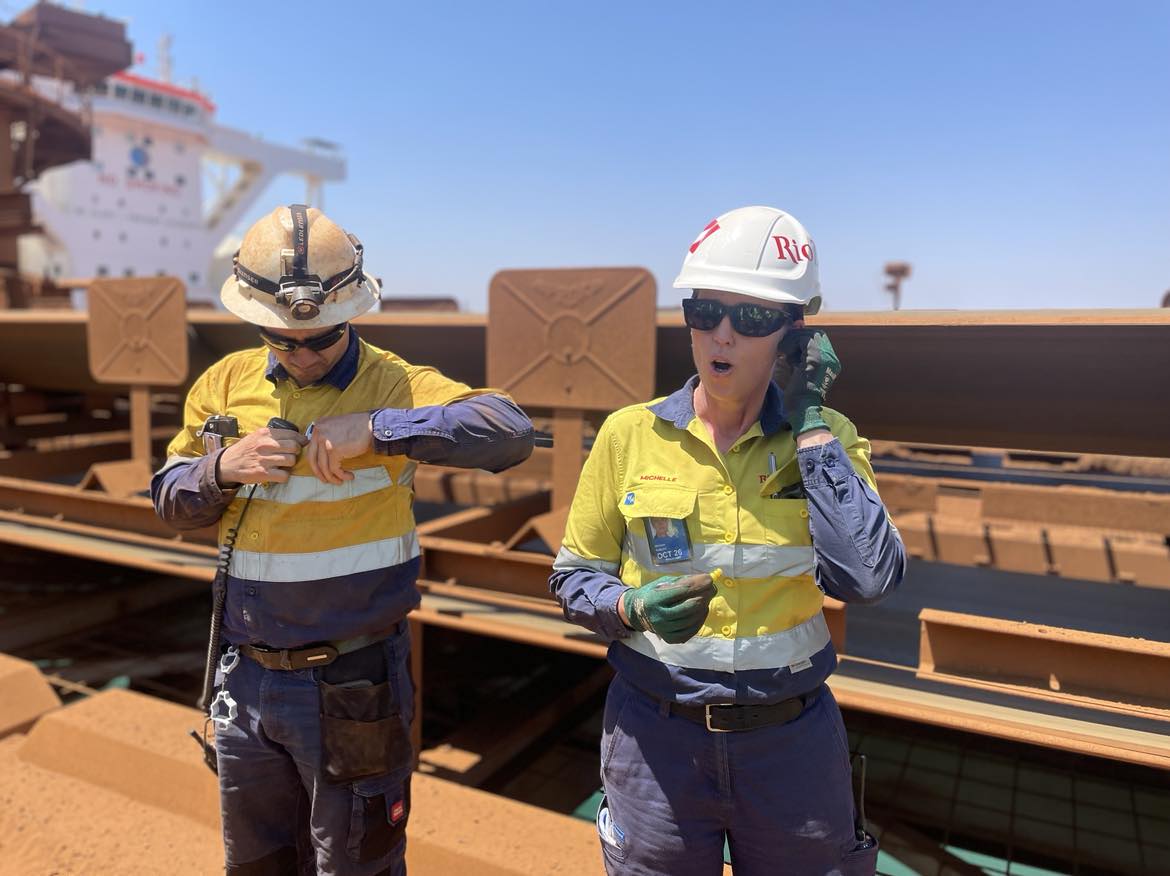
Shiploaders at the berth, the only major machinery operated manually, dump the ore into hatches on capesize vessels.
Each takes 24 hours to load and carried around 180,000t of lump and fines iron ore, most of it headed for China.
On current rates that’s around $32 million a ship. Read it and weep.
The reporter travelled to the Pilbara as a guest of Rio Tinto
Related Topics
UNLOCK INSIGHTS
Discover the untold stories of emerging ASX stocks.
Daily news and expert analysis, it's free to subscribe.
By proceeding, you confirm you understand that we handle personal information in accordance with our Privacy Policy.








